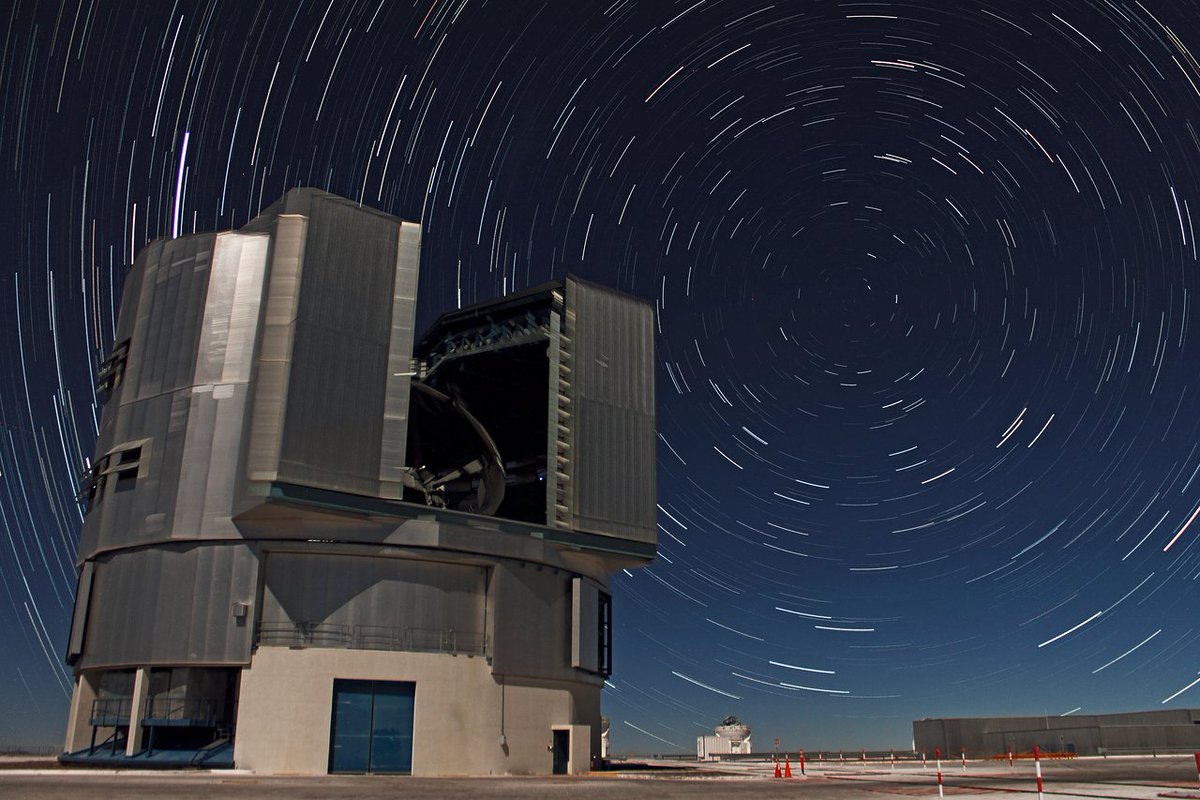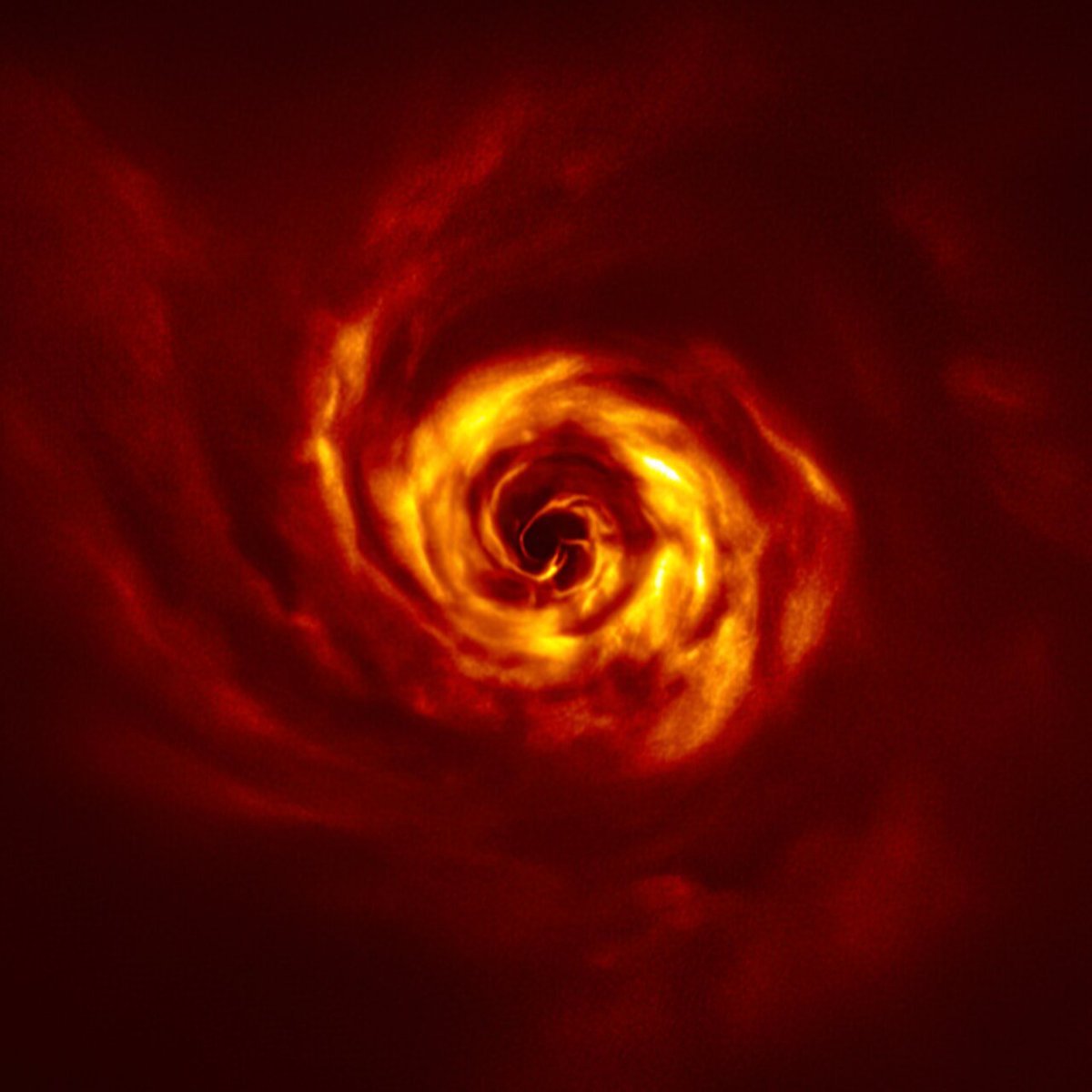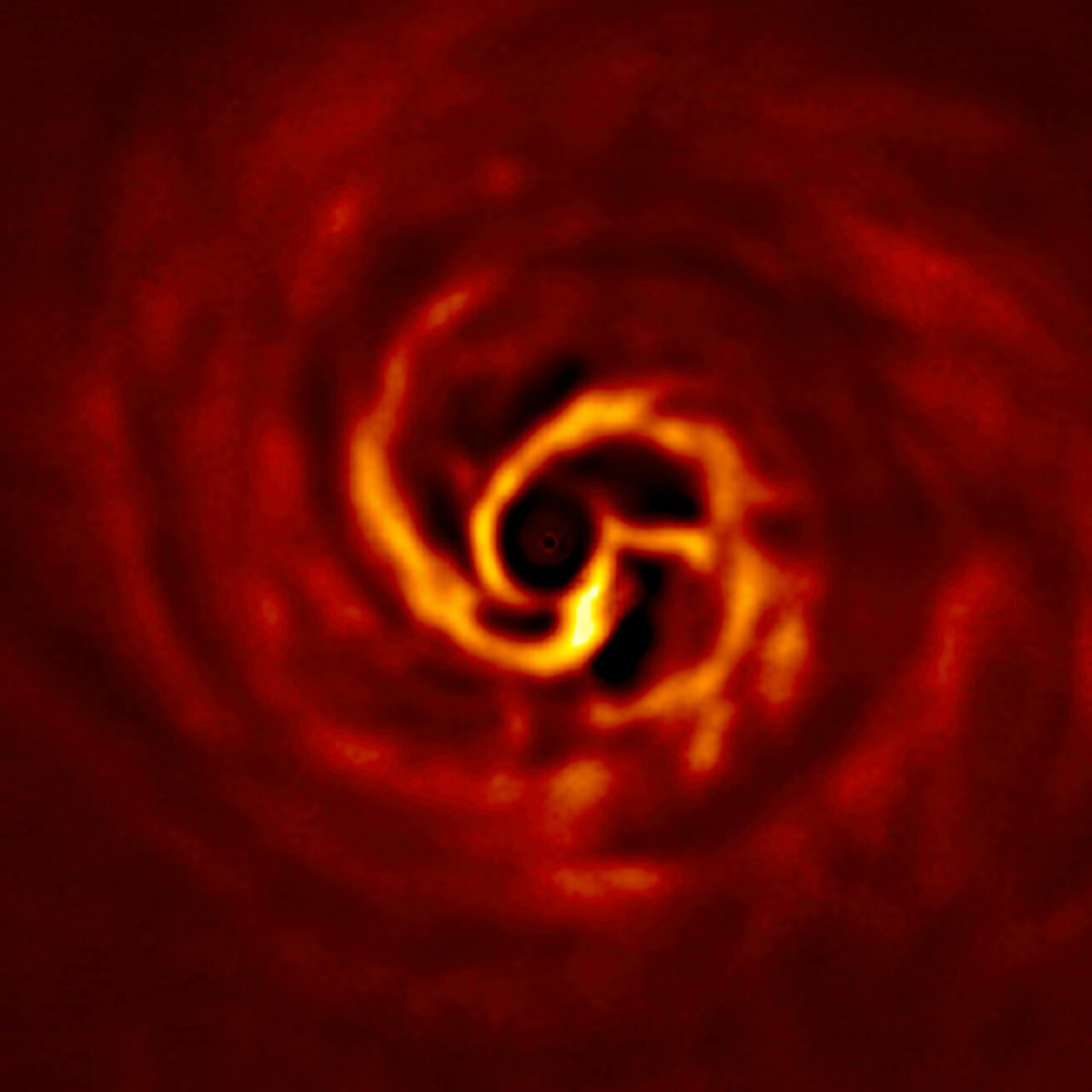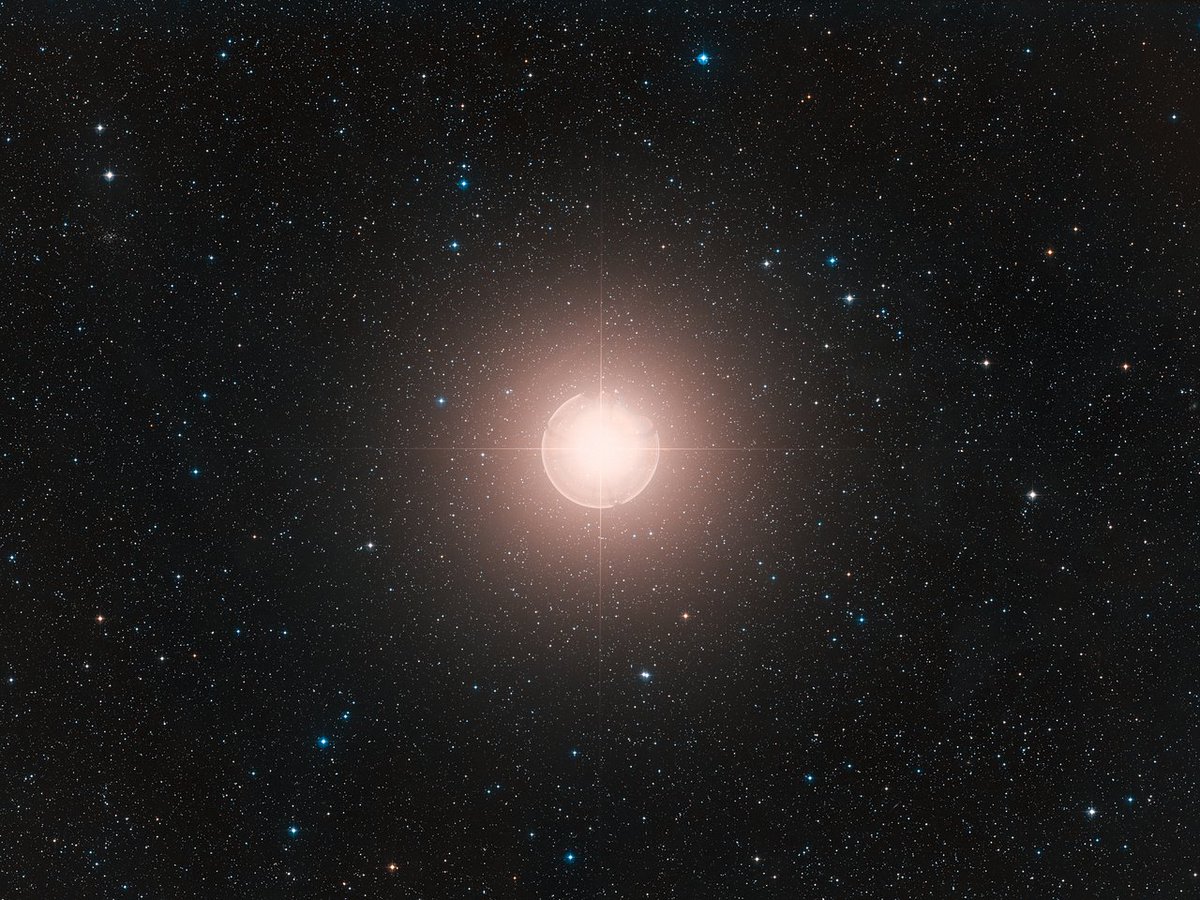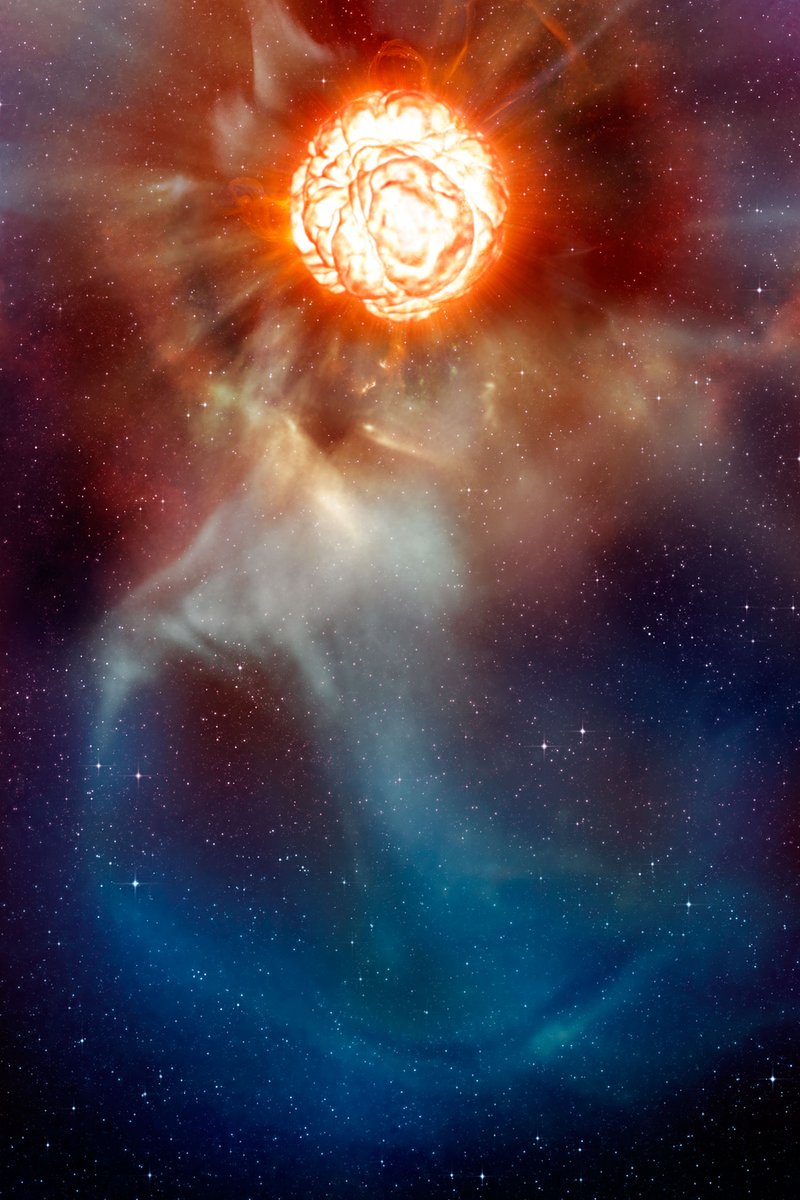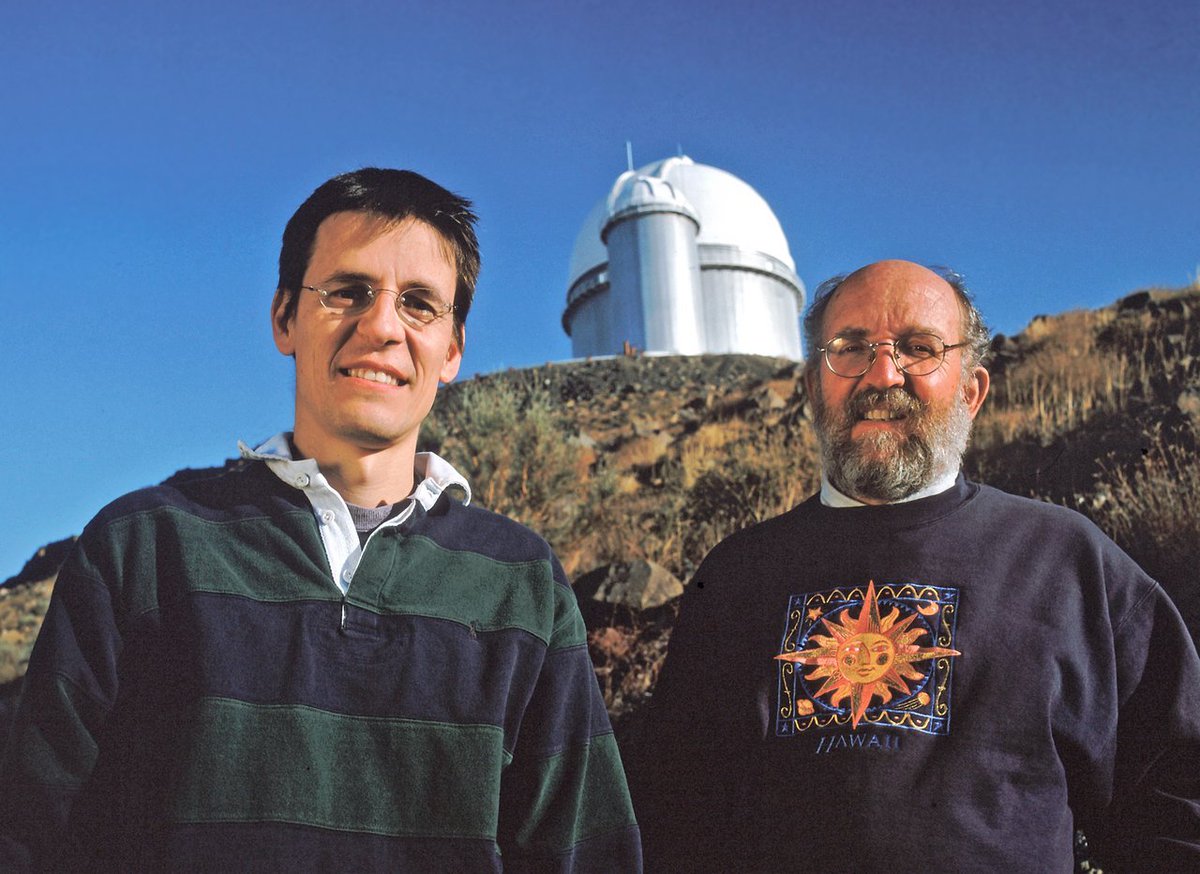
1/ Astronomers made the first clear detection of a moon-forming disc around an exoplanet, using @ALMAObs , in which ESO is a partner.
🔗eso.org/public/news/es…
Credit: ALMA (ESO/NAOJ/NRAO)/Benisty et al.
🔗eso.org/public/news/es…
Credit: ALMA (ESO/NAOJ/NRAO)/Benisty et al.

2/ The disc in question, called a circumplanetary disc, surrounds the exoplanet PDS 70c, one of two giant, Jupiter-like planets orbiting a star nearly 400 light-years away.
Credit: @ESO /L. Calçada, ALMA (ESO/NAOJ/NRAO)/Benisty et al.
Credit: @ESO /L. Calçada, ALMA (ESO/NAOJ/NRAO)/Benisty et al.
3/ Astronomers had found hints of a “moon-forming” disc around this exoplanet before but, since they could not clearly tell the disc apart from its surrounding environment, they could not confirm its detection — until now.
Credit: ALMA (ESO/NAOJ/NRAO)/Benisty et al.
Credit: ALMA (ESO/NAOJ/NRAO)/Benisty et al.

4/ The observations will shed new light on how moons and planets form in young stellar systems.
Credit: @ESO , N. Risinger (skysurvey.org), DSS, ALMA (ESO/NAOJ/NRAO)/Benisty et al.
Music: Astral electronic.
Credit: @ESO , N. Risinger (skysurvey.org), DSS, ALMA (ESO/NAOJ/NRAO)/Benisty et al.
Music: Astral electronic.
5. An even deeper understanding of the planetary system will be achieved with ESO’s Extremely Large Telescope #ELT, currently under construction on Cerro Armazones. #BiggestEyeOnTheSky Read more at elt.eso.org 

• • •
Missing some Tweet in this thread? You can try to
force a refresh



